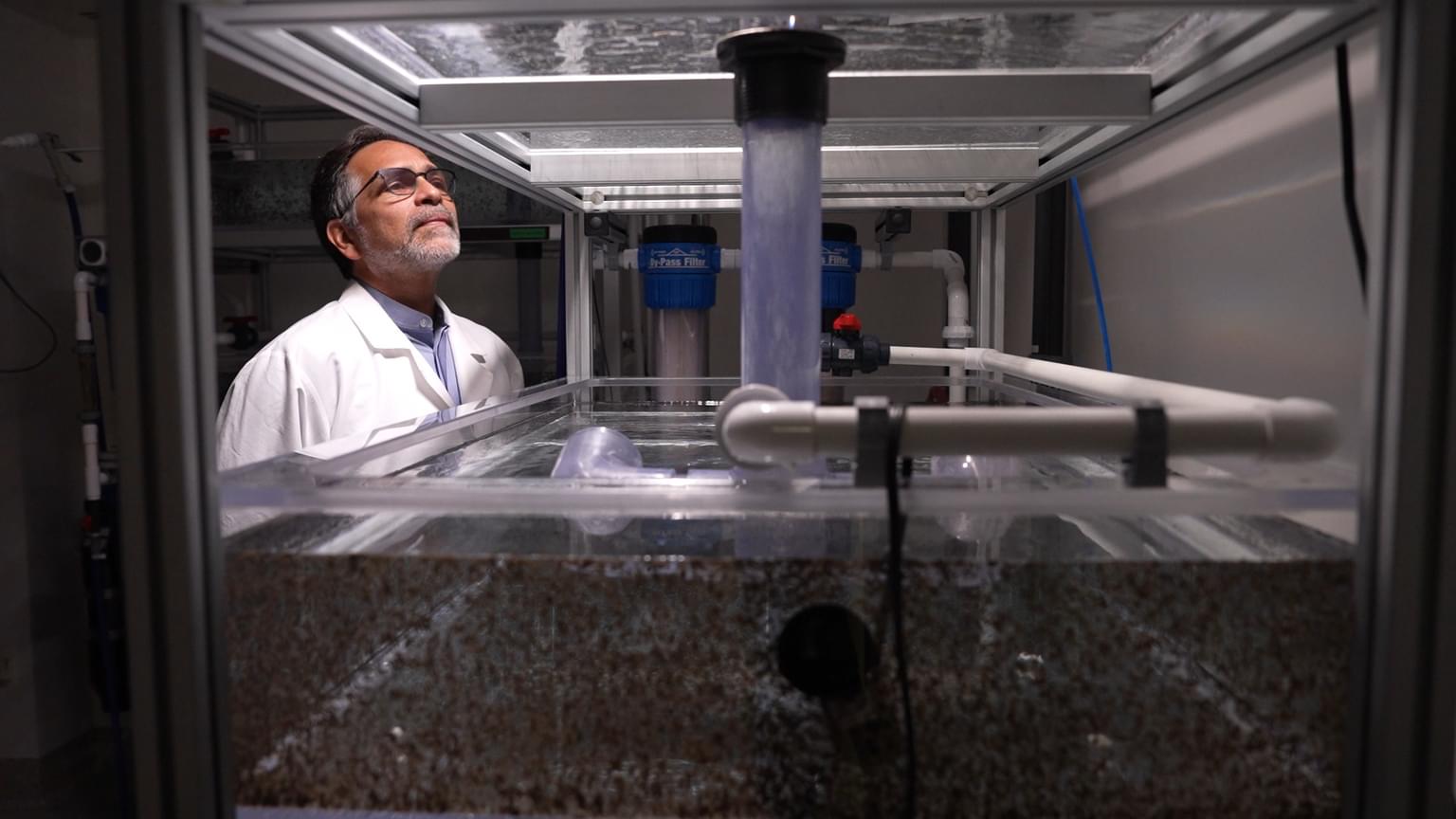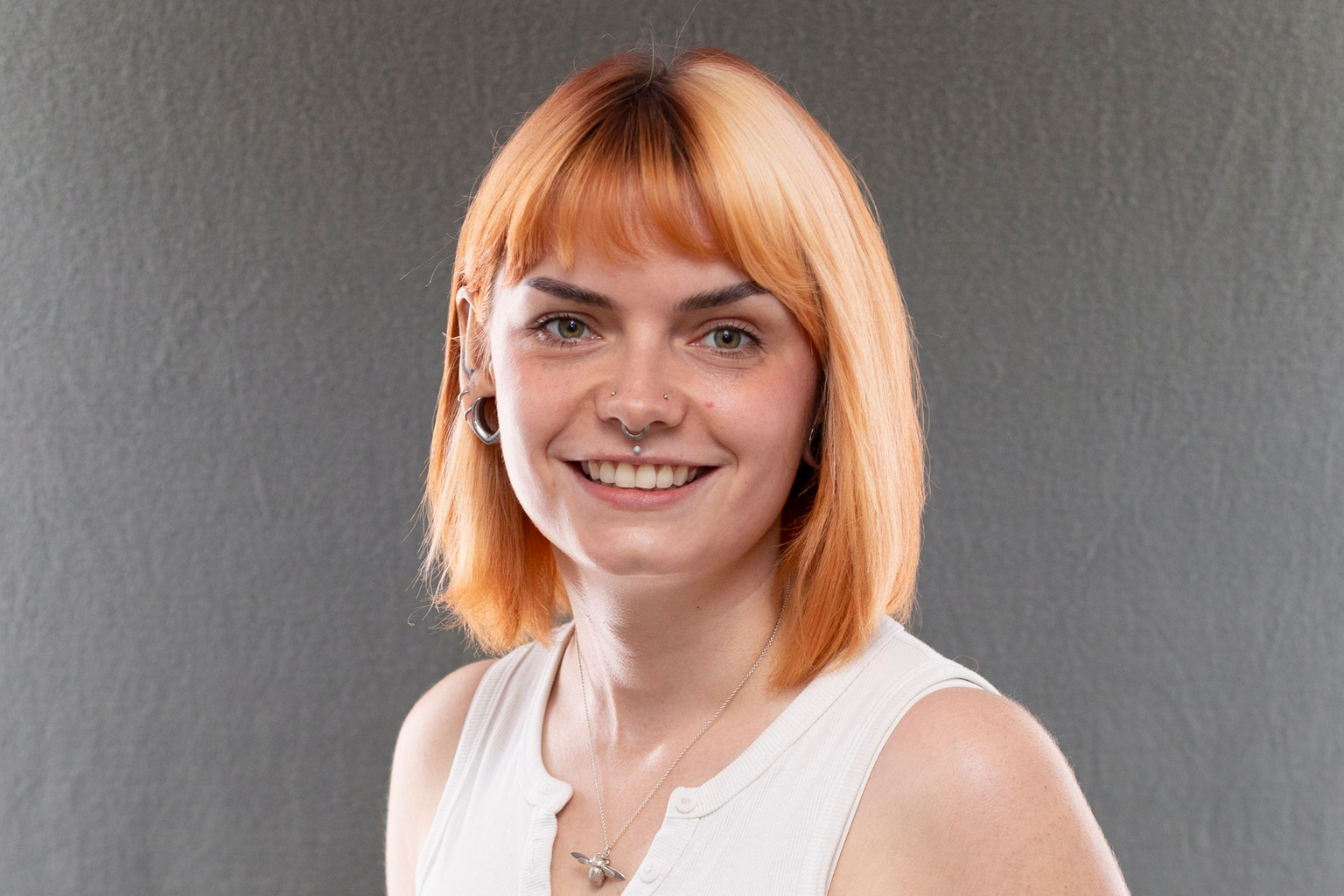News

01 April 2025
Stowers Institute and American Century Investments announce passing of longtime board chairman Richard W. Brown
Brown, who held key leadership roles for both organizations, passed away March 27, 2025.
Read Article
By Alissa Poh
Like many of the Stowers Institute’s young researchers, Marina Venero Galanternik speaks more than one language fluently–in her case, Russian and Spanish, besides English. Venero Galanternik’s first seven years were spent in Moscow, before her family’s cross-hemisphere move to Lima, Peru, her father’s native country.
Oddly enough, “it’s because of my father that I still speak Russian,” Venero Galanternik says. “He often refuses to answer me in any other language.” Otherwise, Spanish conversations are the order of the day during her visits home, even with her Moscow-born-and-raised mother.
Growing up surrounded by a menagerie of pets, Venero Galanternik gave considerable thought to a career in veterinary medicine. “Then one of my dogs died,” she says, “and it was traumatic enough to make me change my mind.” She opted to major in biology, after a year in dental school convinced her that she was captivated not by the prospect of peering into patients’ mouths daily, but by basic science.
Post-college, Venero Galanternik made a bold decision–one that relied on the goodwill of fellow Peruvian Luis Espinoza, PhD, then a researcher at Georgetown University in Washington, DC, whom she’d met during a scientific conference. “He was probably being polite when he said I should contact him if I ever wanted to work in the US,” she muses wryly, “but I took him at his word.” Espinoza could only offer Venero Galanternik an unpaid research internship.
Barely eight months after Venero Galanternik moved to DC, however, Espinoza’s laboratory dispersed. Undaunted, she visited an aunt in Salt Lake City and made her way to the University of Utah. “I walked around the campus, knocking on office doors and inquiring about openings for lab technicians,” she recalls. When she learned that developmental biologist Yukio Saijoh, PhD, needed someone who could work with mice, Venero Galanternik didn’t let the fact that she had never handled the creatures before stop her from requesting an interview. After successfully isolating and harvesting a mouse embryo on her first try, she was hired.
“He [Saijoh] introduced me to developmental biology, and it was like a light coming on,” Venero Galanternik says. “Being able to visualize and study different stages of embryonic growth is truly amazing.” Hooked on the field, she eventually enrolled for full-time predoctoral research, choosing Tatjana Piotrowski, PhD, then on faculty there and now a Stowers Associate Investigator, as her mentor.
“She’s patient, really dedicated to her students, and never too busy to listen to our ideas,” Venero Galanternik says of Piotrowski. “When Tatjana told me she’d be leaving Utah to join Stowers, I simply told my husband he should find a new job in Kansas City, because we were moving there.”
At the Stowers Institute, Piotrowski and her team are studying fundamental processes of biological development by examining the lateral line in zebrafish. This sensory system, important in the schooling behavior of aquatic animals, gradually develops from a migrating cluster of cells called the primordium that migrates from behind a fish’s ear to the tip of its tail.
This collective cell migration is a tightly orchestrated developmental process that has implications for cancer research: Wnt/ß-catenin and fibroblast growth factor (Fgf) signaling, two key pathways directing the primordium’s journey, also influence metastasis, or the invasive spread of tumor cells. Venero Galanternik recently published a paper in Cell Reports showing that heparan sulfate proteoglycans (HSPGs), a type of glycoprotein, modulate cross-communication between Wnt/ß-catenin and Fgf in zebrafish primordium. When HSPGs are rendered nonfunctional, cell migration is truncated, along with subsequent lateral line formation. Examining the subtleties of how these signaling pathways interact in zebrafish development may boost our understanding of molecular and cellular events associated with cancer invasion. Venero Galanternik successfully defended her thesis this spring and plans to pursue postdoctoral research in lymph vessel development. “Certain cells literally detach themselves from veins to form these vessels alongside,” she explains, “and I’d like to figure out the molecular events driving this cell fate specification.” Lymph vessels are often damaged during surgical procedures like mastectomy, and sometimes they’re genetically defective. Either way, the result is lymphedema, or fluid retention and tissue swelling, Venero Galanternik says, so understanding how these vessels develop in the first place is crucial.
A successful scientist, in Venero Galanternik’s view, possesses perseverance, curiosity, and a collaborative spirit–and is amenable to criticism. “In Peru, we say you need to have a big belt,” she remarks. “It’s similar in concept to being thick-skinned. I was pretty sensitive initially, but I handle criticism much better now.” To de-stress or extricate herself from the occasional research rut, she stays active, regularly exploring Kansas City’s many parks and trails, often accompanied by her pug dog, Punch–an affectionate reference to his somewhat squashed appearance. She also listens to Bollywood music along the way. “It’s a new cultural acquisition, and I’m somewhat obsessed,” she confesses.
Encouraged by Piotrowski, Venero Galanternik has now spent several summers at the Marine Biological Laboratory in Woods Hole, MA, immersed in developmental biology. In fact, she recently “graduated” from course attendee to teaching assistant. Educating others about developmental biology is high on her list of career goals, second only to becoming an independent investigator in the field. Ideally, she’ll get to do both. “I just enjoy being around people who love science,” she says with a laugh.
News

01 April 2025
Brown, who held key leadership roles for both organizations, passed away March 27, 2025.
Read Article
Press Release

27 March 2025
Alejandro Sánchez Alvarado, Ph.D., receives recognition as a leader and expert in regenerative biology and its potential to transform human health.
Read Article
News

17 March 2025
“The sky is the limit at the Stowers Institute. If you have an idea, there is always somebody willing to help you make it happen.”
Read Article
